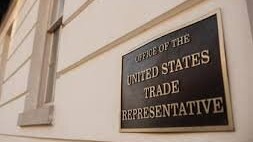Published 11 May 2021
Today’s Talking Trade reviews the latest interview by Katherine Tai, US Trade Representative, on May 5. Having been in her post for a couple of months, it seemed high time to check back on the status of the “worker centric” trade policy that has been touted by the Biden Administration. She’s gearing up for two hearings in Congress this week that are also meant to showcase her approach to managing US trade policy.
Tai has made very few public appearances. Her confirmation hearings provided limited details into her thinking about how US trade policies might adjust to fit in this Administration. Vague answers make sense when trying for a smooth passage with Congress which makes it imperative to say nothing that might offend anyone.
While resetting policy directions does take time, after several months on the job, at least broad outlines ought to be clearer, along with a sense of what is currently considered acceptable or intolerable about past practices.
However, Tai is a master of speaking without revealing any worthwhile information at all. She deftly dodged every question posed to her during her conversations last week in the Financial Times’ Global Boardroom. Instead, she deflected pointed questions and responded mostly with “motherhood and apple pie” sorts of statements.
The net result is it still remains unclear what a worker centered trade policy actually looks like.
Beyond repeatedly stating that the Administration’s “North Star” remains creating a trade policy that delivers value to workers, there were no details on what that means in practice. She said that the whole of government would be laser focused on following this objective.
It’s awfully difficult to have the government machinery start focusing on a particular “Star” without any guidance on what might be meant by the term, what might be problematic from past efforts, and what outcomes should be encouraged going forward. Unless Tai is much more voluble in conversations with the whole of government engaged—to one extent or another—in designing and executing US trade policy, it is highly likely that most officials are uncertain or confused about the path forward.
Of course, it is worth noting that the previous White House created a raft of terribly confusing, unclear or contradictory policies that affected trade. But such practices ought not be the measuring stick for competent governance.
An inclusive trade strategy, which seems to be an important goal for Biden’s White House, ought to be looking out for all Americans, not just the roughly 45% in paid employment that could be called “workers.”
I have met a lot of US officials over the years, members of Congress, and individuals working in the White House. While they all have variations on what sorts of policies they think should be prioritized, nearly every single one would say that they have been creating trade policy for all Americans. That, after all, is really the role of government: to look after its citizens.
Looking after your own citizens, however, should not lead to disadvantages for others in the global system. A purely inward focus from every country without regard to the potential harms caused to others would be very unstable and problematic.
The “worker centered” focus seems to be designed to highlight the dysfunctions of past practices. Although Tai has not been clear on the point, it appears that past policies are now viewed as being too weighted towards big business. But absent more details, it’s not obvious exactly what problems need to be solved or how a different approach would do a better job.
There is no indication of how Tai intends to tackle thorny issues like engagement with China (“we’re hoping to arrange a meeting soon”), existing US tariff policies, managing the ongoing Boeing-Airbus dispute or broader relationships with traditional allies, addressing WTO restructuring, working on trade rules for the digital economy, or navigating possible changes in intellectual property rights protections for the future.
The one area where she has given a hint about future work is to argue for greater “enforcement.” Even this comes with troubling implications that will need to be carefully managed. Enforcement of what, exactly? Presumably existing trade deals with the United States. As these are largely signed with existing US allies, stronger enforcement suggests more challenges ahead for governments that have supported the United States.
In short, after a couple of months of deep thought and engagement, it is still totally unclear where the “North Star” is pointing for US trade policy beyond saying that workers matter more than ever.
As a colleague of mine quipped, it might be ok to stick with broad, undefined and largely unobjectionable statements if you are leading a small or medium sized country with limited global impact. If the head of trade policy for the largest player in the economy cannot usefully define policy outcomes—even if broad objectives are set for the moment—this is problematic for everyone else.
How can other trading partners coordinate with the US or join onto the effort to follow the “North Star” of US-worker-centric policies? Why would they want to do so?
It’s possible to imagine overlap between US-focused worker centric policies and foreign government-focused worker or inclusive trade policies. Lots of governments like to talk about the importance of the “man/woman on the street” in crafting solutions. If lots of people on the streets have similar experiences, then there is likely to be some consistency in policies between governments.
But such overlap is not guaranteed. Streets certainly look different all around the world and appropriate policies need to account for such variation. It is important, therefore, that the US quickly outline what sort of policies fit onto its definition of acceptable outcomes. Only then can anyone else figure out how to align with the US or determine where gaps in objectives might be greatest.
Strong statements of support for workers and arguments that American officials are going to be “light on their feet” in responding quickly to changing demands are all well and good. But at some point, such “motherhood” statements require definitions. Most of all from the United States.
© The Hinrich Foundation. See our website Terms and conditions for our copyright and reprint policy. All statements of fact and the views, conclusions and recommendations expressed in this publication are the sole responsibility of the author(s).

